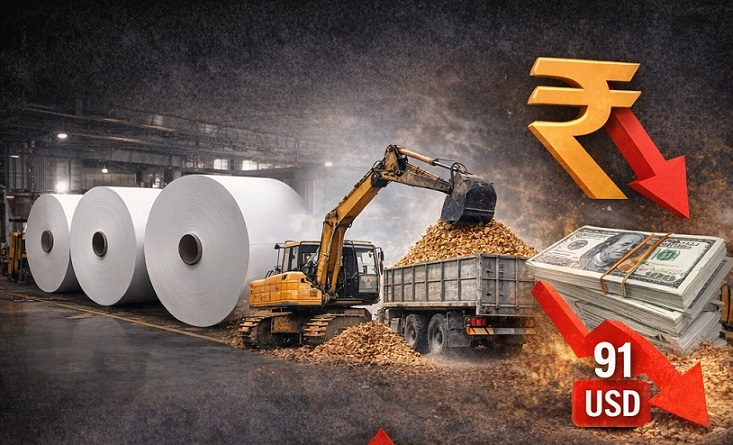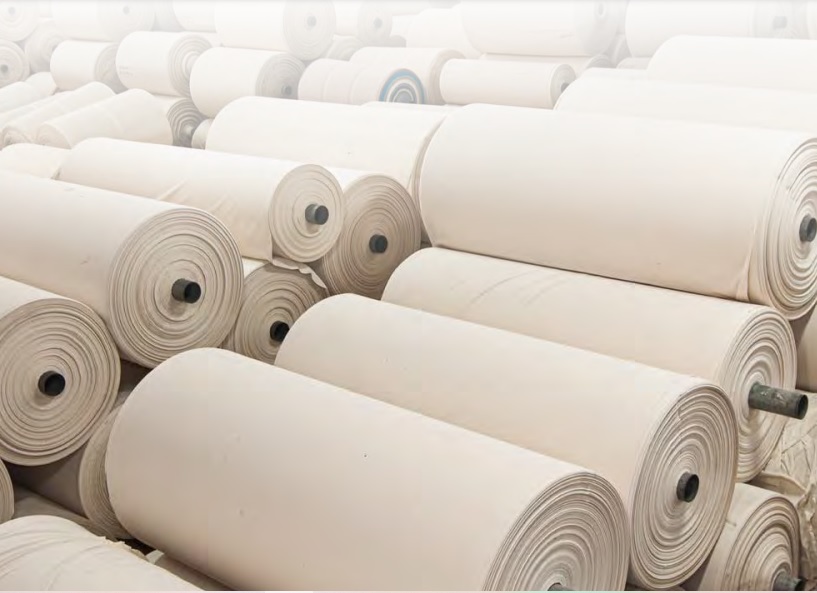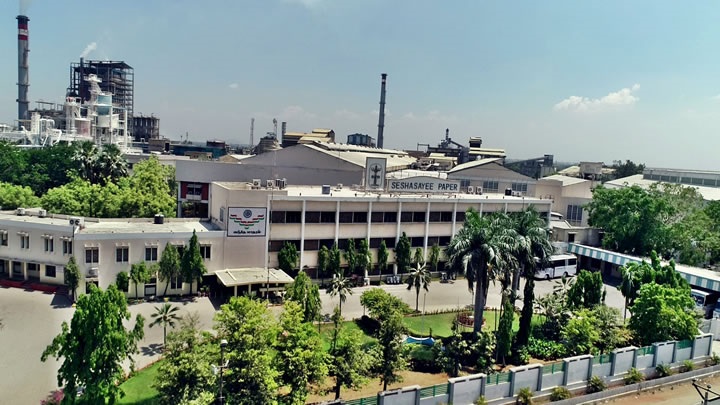Indian Paper Market: Analyzing factors impacting its trajectory and exploring the potential future outlook

Indian Paper Market: Analyzing factors impacting its trajectory and exploring the potential future outlook
-The recent Red Sea Crisis, a period of heightened competition and overcapacity in global shipping, has caused ripples across various industries. However, for the Indian paper industry, the direct impact is likely to be minimal
-A stark 30% decrease in packaging board prices alone, likely due to a slowdown in the export of high-end medicines
The below article is exclusively written by Mr. Ayush Mittal, Managing Director of Shitla Papers Private Limited. Shitla Papers is a service-oriented company marketing a full range of all kinds of paper for packaging, including Kraft Paper, Paperboard, Duplex Paper & Boards, etc., to the ever-changing paper industry in India. Views are personal.
The Pulp and Paper Times:
The Indian paper industry, valued at an estimated ₹80,000 crore, plays a crucial role in the country's economic development. It caters to diverse needs, from packaging and printing to writing and speciality paper, and employs over 2 million people directly and indirectly. However, the recent months have presented a complex scenario with fluctuating prices, evolving demand patterns, and global economic uncertainties. This article aims to shed light on the current state of the Indian paper market across various segments, analyzing factors impacting its trajectory and exploring the potential future outlook.
Domestic Price Scenario:
After a period of initial growth in the first half of FY24, the domestic paper market has experienced a significant correction in prices. This trend is likely a response to softening global demand. Industry leader Mr. Vikrant Goyal highlighted a stark 30% decrease in packaging board prices alone, likely due to a slowdown in the export of high-end medicines, a sector heavily reliant on this type of packaging. While specific data on future pricing for other paper grades like Wood Pulp Paper (WPP), copier paper, and specialty paper is limited, the overall price correction suggests potential adjustments across the board.
Export Scenario
India's paper exports, typically around 7-8% of total production, present a complex picture. The packaging paper segment, particularly kraft paper, faces a decline in export demand due to the global economic slowdown impacting international trade. This decrease translates to lower export earnings for paper manufacturers. However, there's a silver lining. The slowdown frees up paper for the domestic market, potentially easing any supply constraints. The key challenge for the industry lies in striking a balance between maximizing export revenue and ensuring sufficient paper availability to meet domestic needs.
Rise of Paper Imports and its Impact
While the previous sections explored domestic demand and global trends, a significant factor influencing the Indian paper market is the rise of paper imports. Here's a breakdown of this phenomenon and its implications:
• Import Surge: Data from the Directorate General of Commercial Intelligence and Statistics (DGCI&S) paints a concerning picture. Paper imports reached 19.3 lakh tonnes in FY24; a staggering 34% increase compared to the previous year. This follows a 25% jump witnessed in FY23.
• ASEAN Dominates Import Landscape: The Association of Southeast Asian Nations (ASEAN) has emerged as the primary source of imported paper, accounting for a 27% share. This rise is likely due to the zero-import duty advantage offered by the ASEAN-India free trade agreement. Paper imports from ASEAN doubled to 5.1 lakh tonnes in FY24 compared to FY23.
• Value Doubling in Three Years: The value of paper imports has also skyrocketed, doubling in the last three years. From ₹6,140 crore in FY21, the figure reached an all-time high of ₹13,248 crore in FY24, reflecting a concerning trend.
The rise in paper imports has sparked concern within the domestic paper industry. The Indian Paper Manufacturers Association (IPMA) highlights the threat this poses to the viability of many paper mills in India. Despite having the capacity to produce most paper grades domestically, the influx of imports, particularly those from ASEAN countries which benefit from zero import duties under a free trade agreement, undermines the commercial competitiveness of domestic mills. Data from the government reveals a stark reality - out of over 900 paper mills in India, only 553 are currently operational. Furthermore, the IPMA points out that the domestic industry has invested significantly in recent years to upgrade technology, improve product quality, and enhance sustainable practices. These investments are now at risk due to the price pressure exerted by duty-free imports.
Input Cost Analysis and Pulp Price Scenario
While detailed data on the current and projected costs of various papermaking ingredients besides pulp is not readily available, the recent price corrections in the paper market suggest potential adjustments in these input costs as well. Pulp itself, a crucial raw material, has seen global price fluctuations. Although specific data for India is limited, monitoring these global trends is essential to understand how they might impact domestic paper production costs.
Waste Paper Scenario
The domestic waste paper market, a key source of sustainable raw material for the paper industry, is facing a challenge. There has been a significant 20% decrease in domestic waste paper prices. This could indicate a supply and demand imbalance, with the current amount of waste paper exceeding what paper mills require. This situation might be caused by various factors, such as increased waste paper collection efforts or a decline in paper mill demand for recycled pulp due to other factors like cheaper virgin pulp imports.
Red Sea Crisis Impact
The recent Red Sea Crisis, a period of heightened competition and overcapacity in global shipping, has caused ripples across various industries. However, for the Indian paper industry, the direct impact is likely to be minimal. Here's why:
• Distant Pulp Sources: India's primary source of pulp, particularly hardwood pulp, comes from geographically distant regions like Indonesia and South America. These locations remain largely unaffected by the Red Sea disruptions.
• Softwood Pulp and Short-Term Disruption: While softwood pulp, primarily sourced from Europe and North America, might experience some slight impact due to rerouted shipping, it's crucial to remember this is likely temporary. Shipping lines are already planning to revert to traditional routes, minimizing long-term consequences.
• Contractual Pulp & Waste Paper Imports: Pulp and waste paper imports often follow contractual agreements with lead times of 2-3 months. This existing buffer minimizes any immediate price fluctuations due to the Red Sea Crisis.
• Unaffected Source of Paper Imports: India's major paper and paperboard imports originate from Southeast Asian countries and China. These regions have not faced disruptions in shipping routes, further minimizing the crisis's impact on paper availability.
The Indian paper industry finds itself at a crossroads. While domestic demand remains strong, price fluctuations, global uncertainties, and a rise in imports pose significant challenges. However, there's a path forward. Focusing on the substantial domestic market through competitive pricing and innovation can create a solid foundation. Embracing sustainable practices, including waste paper utilization and energy-efficient technologies, is key for long-term viability. Collaboration with the government on policy changes and import duties can level the playing field. Finally, building trust with customers through transparent pricing and quality will secure a lasting competitive edge. By implementing a multi-faceted strategy that prioritizes domestic needs, sustainability, innovation, and strategic partnerships, the Indian paper industry can navigate the current complexities and emerge even stronger in the years to come.
ABOUT COMPANY
Shitla Papers Private Limited (SPPL) formerly known as Shitla Paper Trading Co. Pvt. Ltd. established in the year 1997 is a service-oriented company marketing a full range of all kinds of Paper for Packaging which includes Kraft Paper, Paperboard, Duplex Paper & Boards, etc to the ever-changing paper industry in India. We serve diverse industries like corrugation, e-commerce, FMCG, paper bags and many more. With a strong network across India and beyond, we connect you with leading paper mills and converters, ensuring a fast and reliable service. SPPL welcomes the opportunity of assisting your company in finding solutions to your papers and paperboard requirements.
Web Title: Indian paper market: Analyzing factors impacting its trajectory and exploring the potential future outlook





 Join WhatsApp Group
Join WhatsApp Group Join Telegram Channel
Join Telegram Channel Join YouTube Channel
Join YouTube Channel Join Job Channel (View | Submit Jobs)
Join Job Channel (View | Submit Jobs) Join Buy Sell Channel (Free to Submit)
Join Buy Sell Channel (Free to Submit) Paper News Headlines Channel (Free to read)
Paper News Headlines Channel (Free to read)














